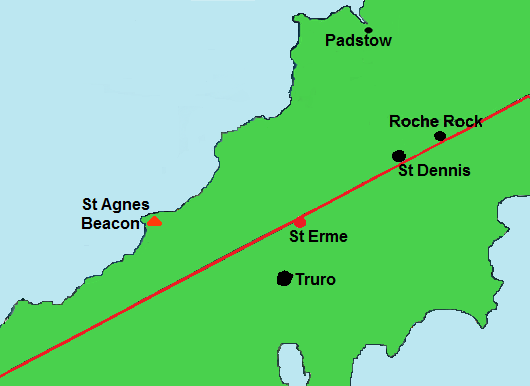Gaunt is a play on words, as in "tall, thin man" referring to a menhir and it's not so far removed from giant either. Gaunt was enormously wealthy (his Savoy Palace was the epitome of opulence just as the Savoy Hotel is today) and giants are associated with treasure as has already been said.
Carn Brea Castle is said to have been built on top of an earlier chapel dedicated to St Michael. He's often found on high places, somewhat overshadowed in this instance by St Agnes' Beacon, Carn Brea's sister hill, which can be seen out at sea and is described as "the most prominent feature" of the coastline.

Click the above logo to return to the main site
